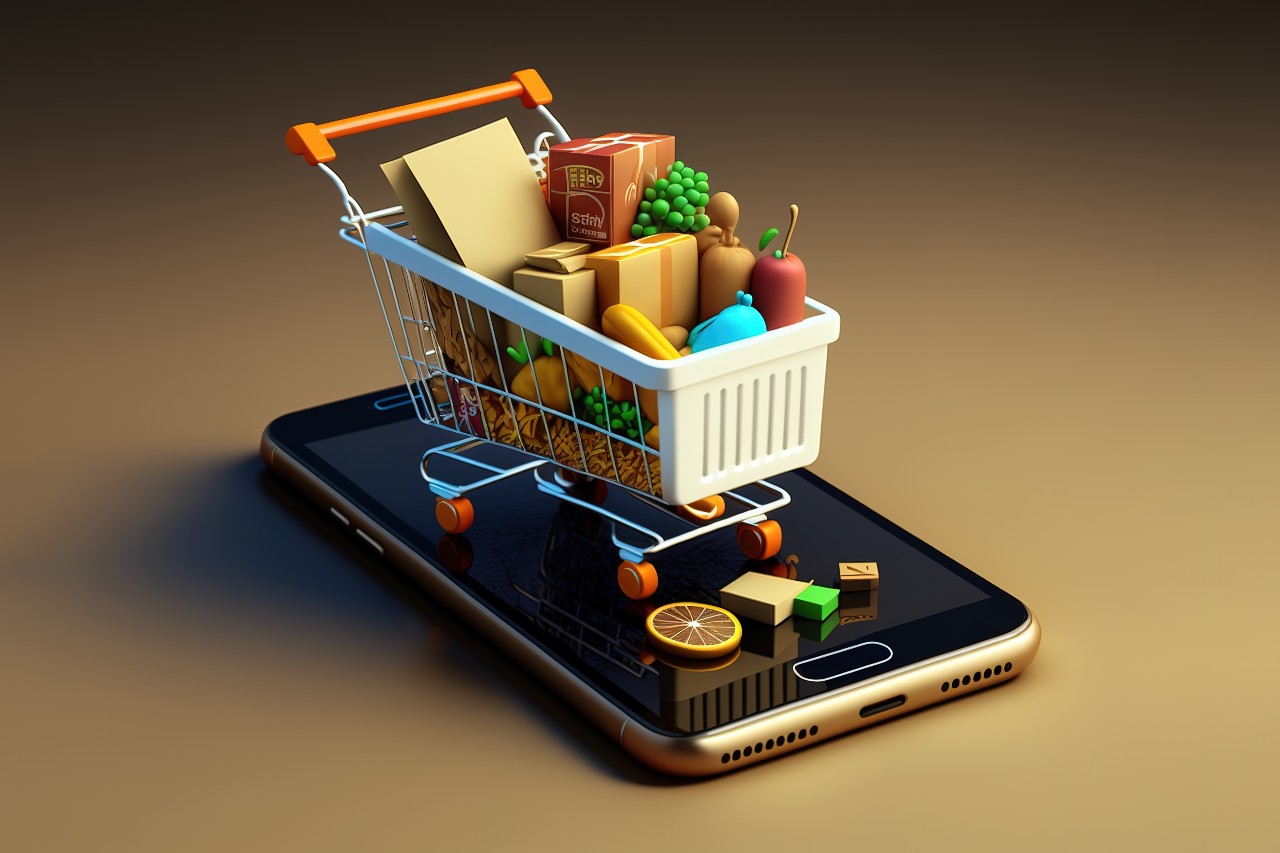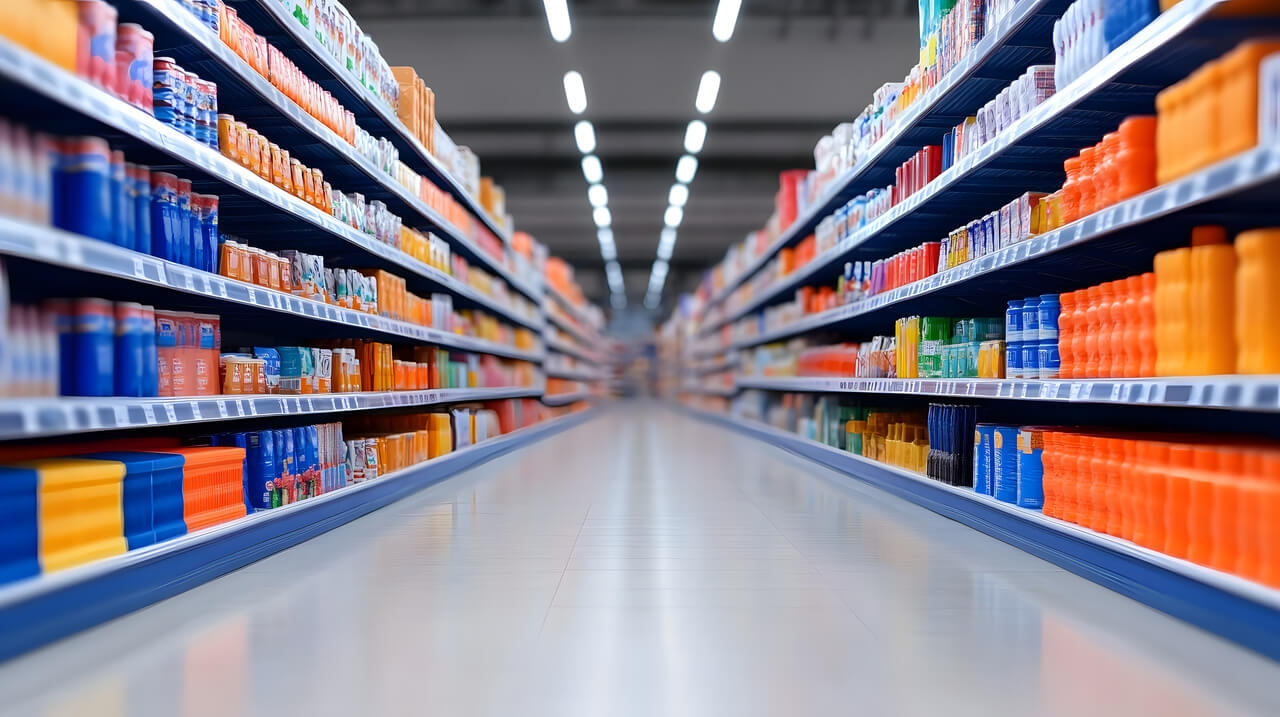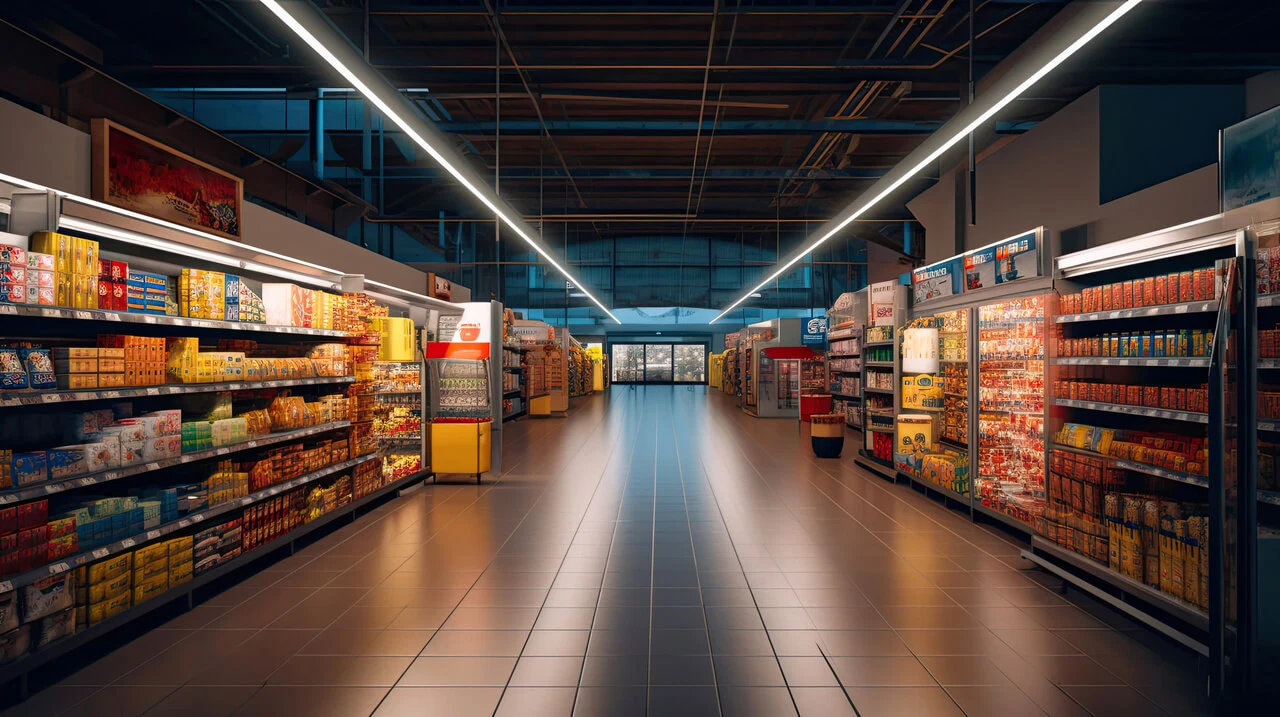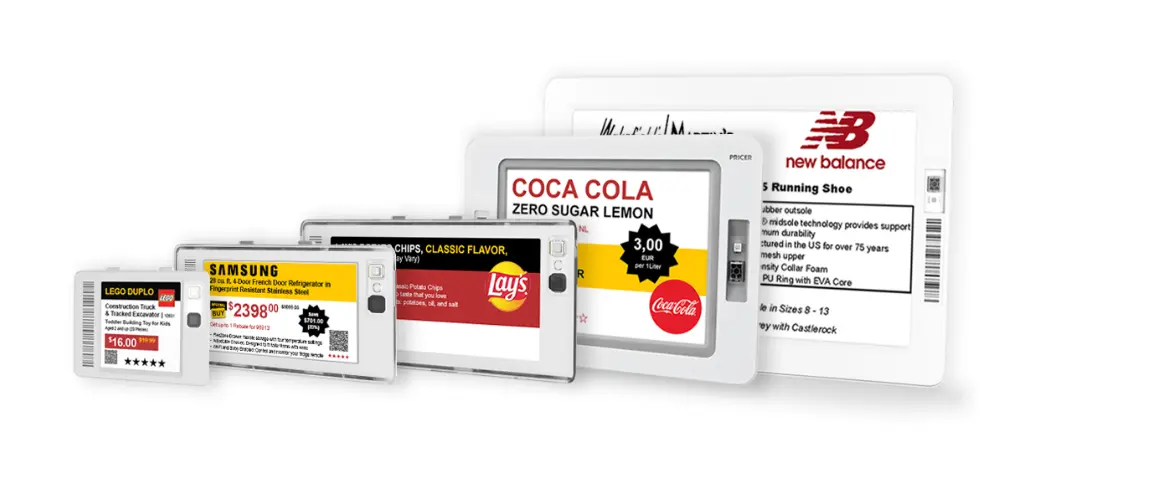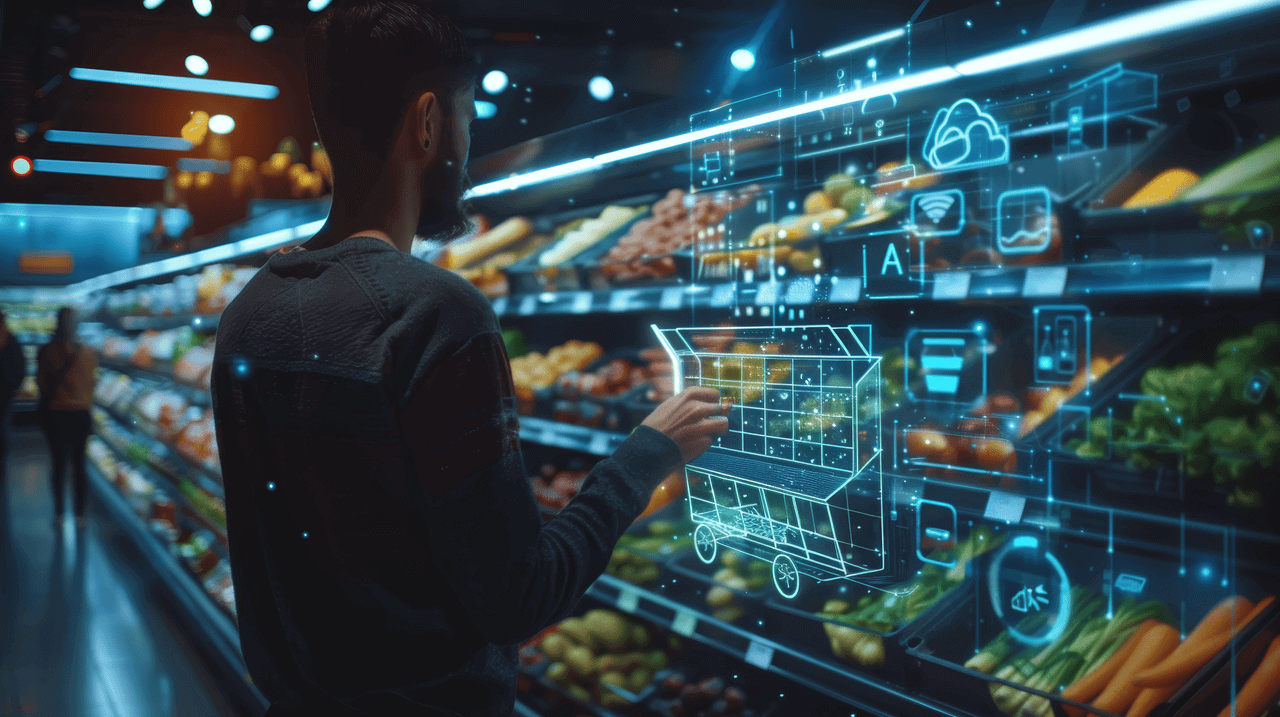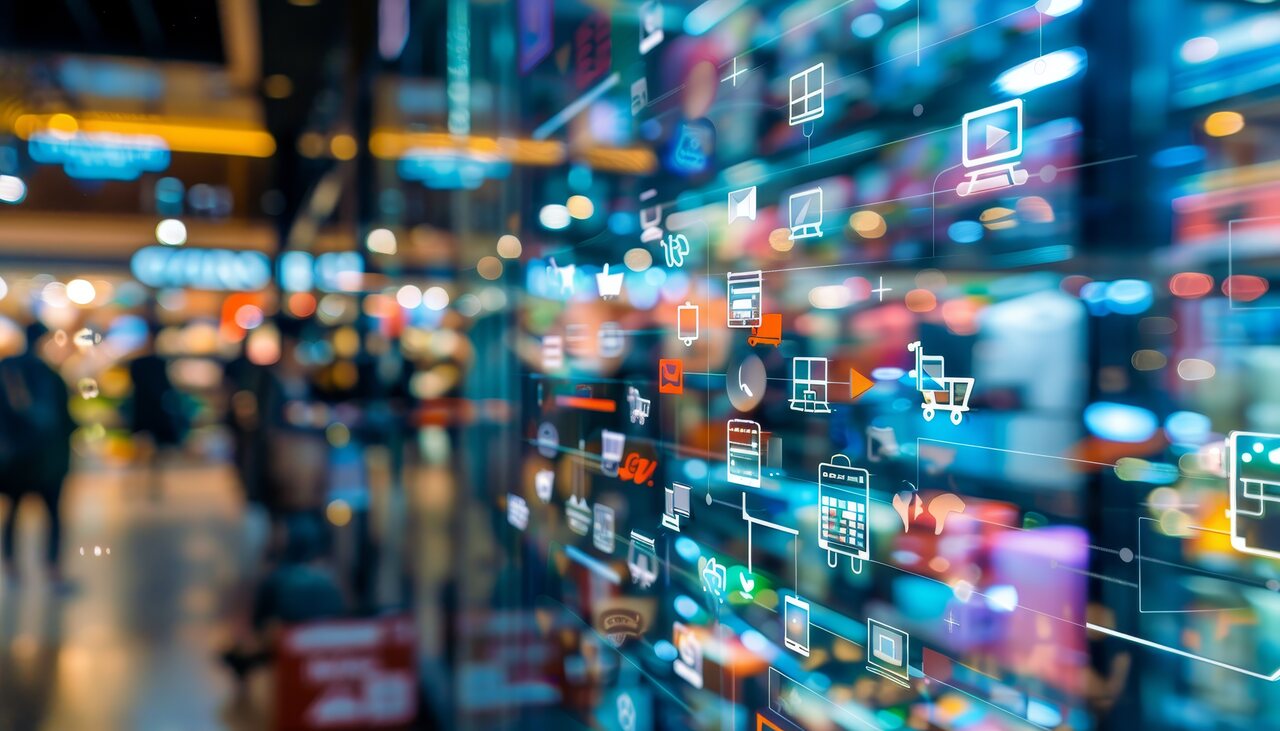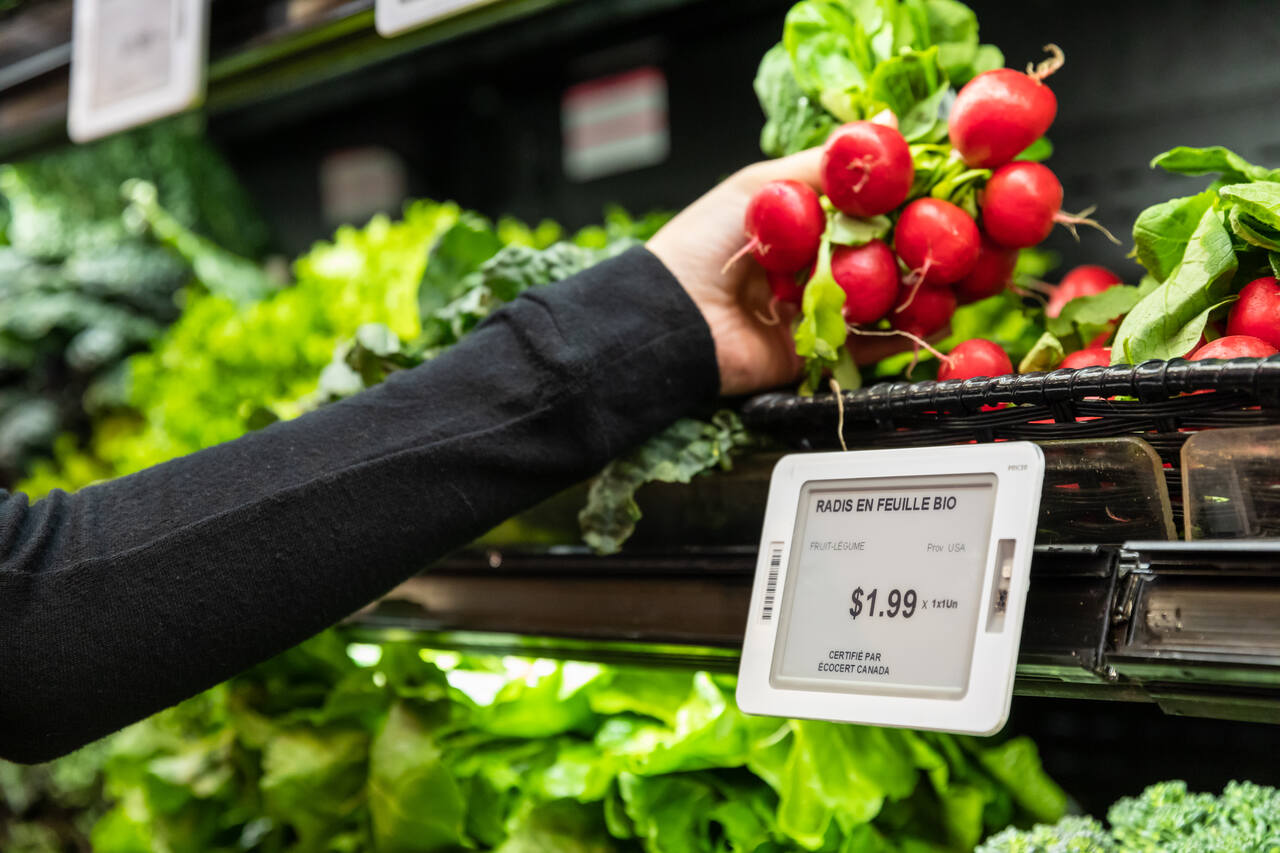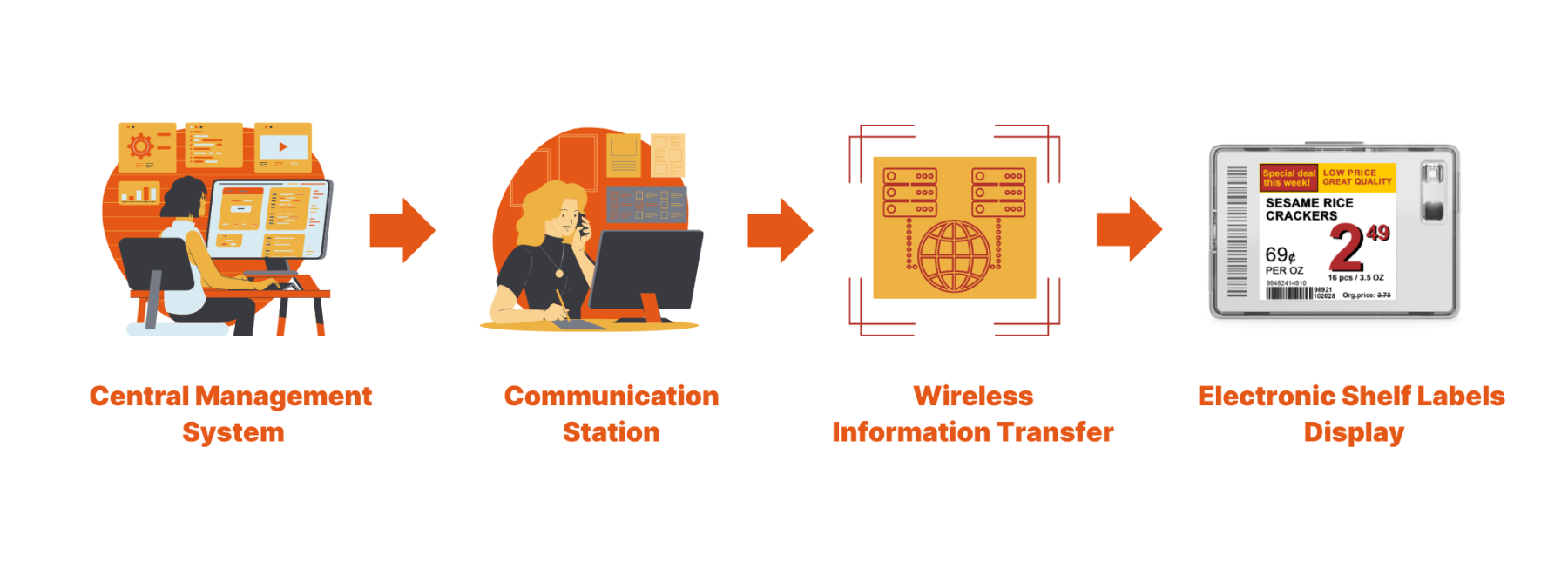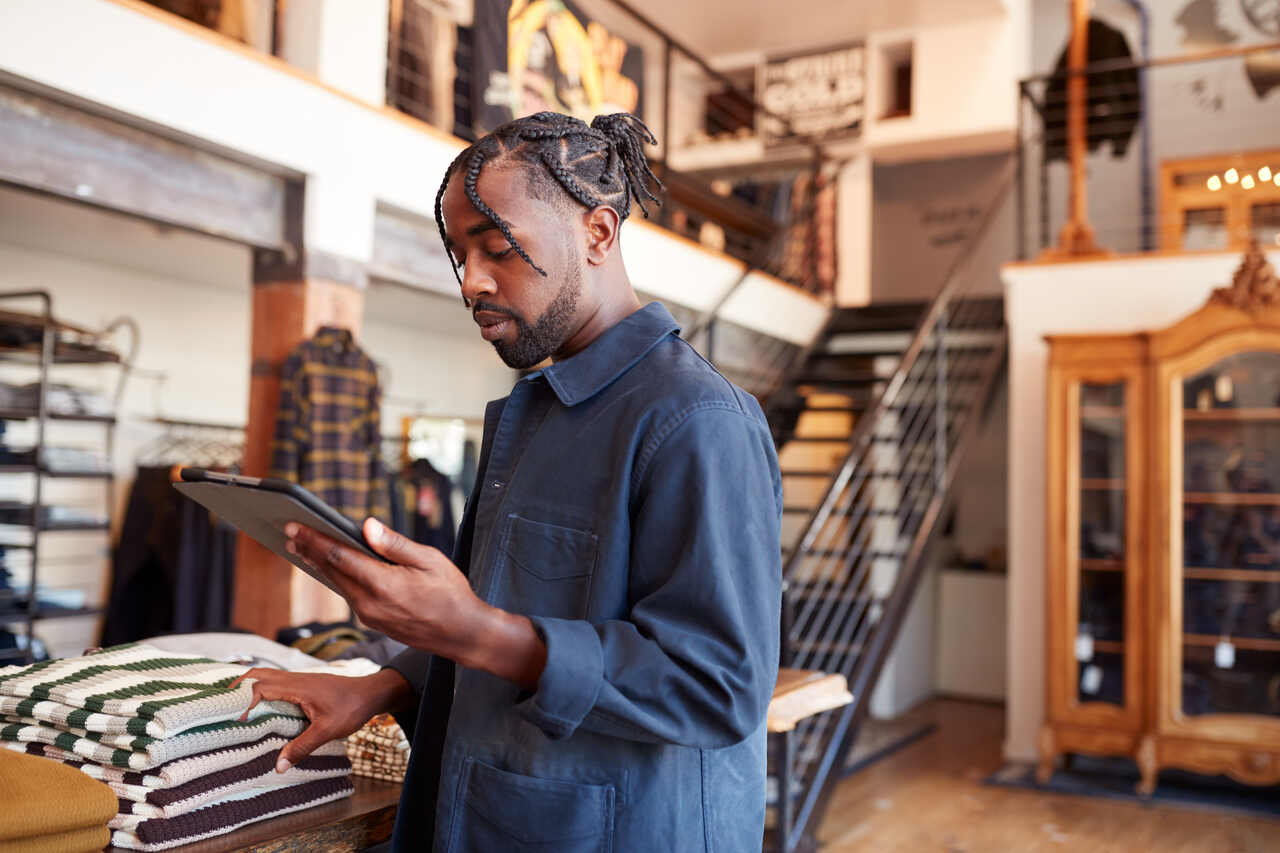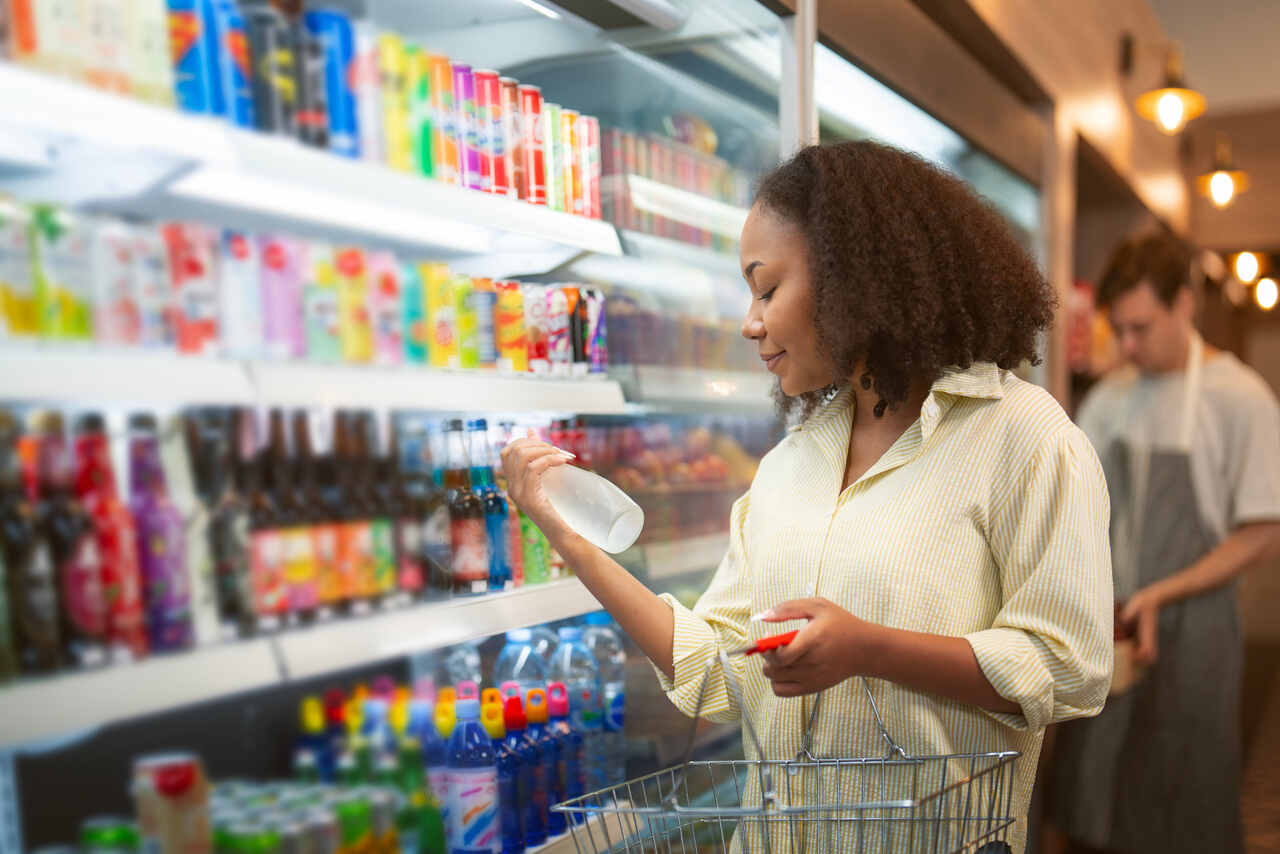Grocery stores, once simple spaces for food procurement, are now transforming into high-tech hubs. From self-checkout lanes to smart carts, technology is revolutionizing the way we shop. Join us as we explore the latest trends in grocery store technology and how they’re shaping the future of supermarket retail.
Smart carts for seamless in-store shopping
Smart carts are gaining significant traction in supermarkets around the world. Large retailers like Amazon Whole Foods are implementing smart carts that use AI and computer vision to automatically track items as they are placed in carts. The technology of real-time inventory tracking instantly identifies items removed from shelves, allowing retailers to quickly and effectively manage stock levels in warehouses, dark stores and store outlets.
Smart carts also eliminate the need for traditional checkout lines by allowing customers to scan and pay for items directly through their cart. Some carts also offer store navigation features, helping shoppers find what they are looking for quickly and easily.
Personalization can lead to increased sales for retailers and savings for customers, and smart carts present huge potential for facilitating custom shopping experiences on a large scale. Built-in screens provide product information, pricing details, and personalized recommendations as customers shop, including targeted promotions and coupons based on their shopping history and current cart contents.
In addition, if customers can complete their purchase and leave the store without unloading items at a checkout counter, it saves time and reduces frustration. Smart carts cater to convenience-seeking shoppers, particularly millennials and centennials who prefer self-service options and are accustomed to omnichannel shopping. The technology aligns with the expectations of digital-savvy consumers who have become used to seamless online shopping experiences and expect a comparably easy and fast in-store shopping experience.
Electronic shelf labels: fast, efficient, eco-friendly data communication
Electronic shelf labels are a key technological component of any advanced grocery retail system, both in-store and in warehouses. While computer vision and AI combine to offer an unprecedented level of support, both of these examples of IoT in retail require the right tools so that they can work. Enter Electronic Shelf Labels, the small tags that identify the price and code of each item on a shelf.
Digital price tags are the backbone of any effective grocery store retail outlet, as they provide the basis for integrating more advanced technology into a store’s processes and systems.
In short, these paperless, wireless tags do much more than just display the price of an item. They can be integrated with sales management software to track inventory, provide additional product information and more.
Pricer ESLs from JRTech feature Instant Flash LED lights that illuminate when a product is scanned or a button is pressed. Combined with geolocation technology, these lights can guide store employees to products with low or out-of-stock levels, making “click and collect” fulfillment simple and fast. Additionally, Instant Flash helps prevent restocking errors by visually highlighting the correct product placement.
Pricer’s digital labels can display detailed information like last order dates, quantities, planned deliveries, sales averages, and more. This data can be accessed on-demand or at specific times using a handheld device. By providing additional insights and guidance, Pricer ESLs streamline grocery store inventory management, enhance data accuracy, and minimize human error.
AI-powered, data-driven insights for reduced supply-chain costs
Smart carts are only one example of how grocery retail is being transformed by AI. Artificial intelligence can be used to create unprecedented data-driven insights for the grocery retail industry based on everything from shopping patterns and behaviors to inventory and trends. Retailers can use these insights to optimize store layouts and product offerings for improved customer experience and more efficient store operations, which can in turn lead to an increase in profits.
In warehouses, robotics that rely on AI can be used to improve fulfillment processes through picking, dynamic slotting and path planning, marking an important advance in an area that 89% of grocers believe is vital to improving profitability. A report from data analytics firm Grocery Doppio predicts that AI will create $113 billion in operational efficiency and new revenue in the grocery retail industry in 2025. It also reports that nearly three-quarters of grocery technology executives believe AI will be incorporated into most of their software by 2025, highlighting the significant impact artificial intelligence is having on the grocery retail industry.
Retail AI is making it possible for retailers of all sizes to implement predictive inventory management, automated restocking alerts, pricing optimization and efficient and cost-effective event-driven marketing thanks to demand forecasting. In larger grocery retail outlets, AI can also be used for fraud detection, in particular when implemented in tandem with computer vision.
Computer vision for items and shopper ID
Computer vision refers to computers’ ability to interpret and understand visual information from the world. It involves methods for acquiring, processing, analyzing, and extracting meaningful information from digital images and videos.
For example, computer vision can be used to recognize fruits and vegetables at a self-checkout station. Accurate produce ID can then be displayed on the screen so that shoppers are guided to use the correct PLU (Price Look-Up) codes when checking out.
Computer vision tools are what make it possible for smart carts to automatically identify and count items in the cart. They are a key component of the shelf-scanning robots used for inventory management, and can also play a key role in detecting theft and suspicious behavior in-store by analyzing customer behavior and dwell times, which helps reduce shrinkage without profiling customers.
Advanced computer vision technology allows images to be interpreted at a high level by computers, and can even be used to automatically inspect produce and other perishables, or to identify damaged goods. Currently, only a few larger chains are currently implementing robotics on the floor, such as Walmart’s Alphabot, however this particular implementation of computer vision could have a big impact the future, as robots can pick and pack orders up to 10 times faster than humans.
Overall, computer vision is key to the future of grocery technology, in particular as the shopping experience becomes increasingly autonomous.
Autonomous shopping: self-checkout & Just Walk Out supermarket technology
Today’s consumers expect shopping to be easy and quick, and they anticipate a very high level of accuracy and service at every stage of their grocery shopping journey. In response, retailers are relying on technology to provide the fastest, most efficient checkout experience possible. Enter the technologies of self-checkout kiosks and Just Walk Out (JWO) checkout-free shopping.
Self-checkout
Self-checkout kiosks are now established as a normal feature of most larger supermarkets. While the basic features of scanning and tallying items remain more or less the same, advanced features and more refined capabilities are continually being added to these already efficient, cost-effective checkout stations. Improved barcode scanning capabilities, integration with mobile payment systems and, in some cases, AI-assisted item recognition are speeding up the process even further, making these kiosks invaluable tools for any large grocery retailer who wishes to remain competitive.
Just Walk Out
The Just Walk Out technology represents a “grab and go” approach to shopping that aims to eliminate traditional checkout lines. This approach relies on frictionless checkout technologies, which involve the implementation of systems that use computer vision and sensors to track items and automatically charge customers so they don’t have to scan their items themselves.
According to Amazon, who is pioneering the technology that makes JWO shopping possible, there are over 170 third-party locations using Just Walk Out technology in the US, UK, Australia, and Canada in 2024. It is an approach to retail shopping that is gaining traction and could be the future of grocery retail shopping.
JRTech is your partner for digital retail pricing solutions
By leveraging technology across various areas of grocery store operations, grocery retailers can significantly improve operational efficiency, reduce costs, gain valuable data-driven insights and create a better customer experience.
At the heart of enhanced operations are the tools that link products, consumer experience and data: Electronic Shelf Labels. For solutions that make it possible for you to incorporate the most advanced technologies in your retail outlet, trust the world’s most reliable electronic shelf labels system, Pricer.
Based in Canada, JRTech is the leading provider of Pricer Electronic Shelf Labels in North America. We provide supermarkets and other retailers with top-quality digital retail pricing solutions so businesses can streamline their operations, reduce waste, improve the customer experience and more. Contact us to learn more.

